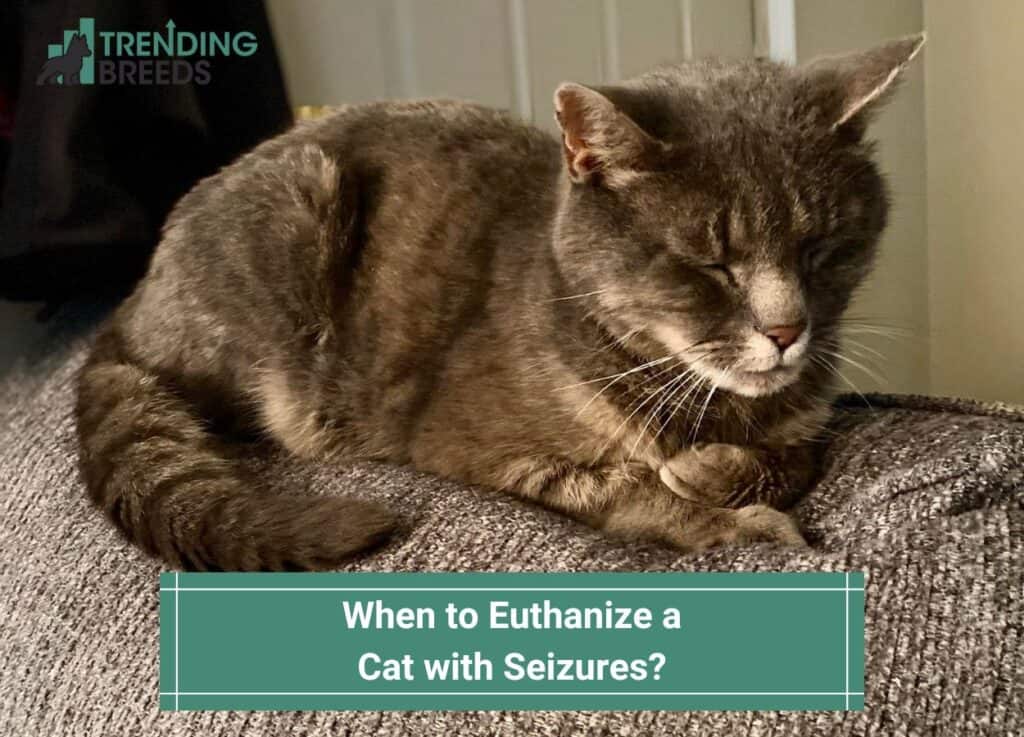
Watching your cat have a seizure can be extremely distressing for most cat owners, and some seizures can be quite painful for cats. You might wonder when to euthanize a cat with seizures.
If your cat’s seizures are severe and have a poor prognosis, it may be time to consider euthanasia.
Some cats may develop seizures due to a fatal underlying condition. Such a situation may also warrant euthanasia.
Read below for more information about when to euthanize a cat with seizures.
Before you scroll further down this guide, check out these other cat-related articles: What Is The IQ Of A Cat? and Where Can I Declaw My Cat for Free?.
Table of Contents
What You Should Know About Seizures

When a cat has a seizure, it experiences abnormal electrical activity in the brain, which manifests in various ways, including drooling, vomiting, convulsions, and even loss of consciousness.
Epilepsy is a chronic illness that is the leading cause of seizures in cats. There is a wide range of seizure severity, frequency, and potential consequences.
Some seizures can last so briefly that your cat won’t even feel the effects.
However, on rare occasions, your cat might experience a brief seizure that includes ferocious convulsions, drooling, and other frightening symptoms.
After a cat’s seizure ends, the animal’s brain usually quickly recovers and resumes regular operation.
Even after you’ve given your cat plenty of time to recover from the seizure’s effects, it may still seem disoriented.
Are Cat Seizures Painful?
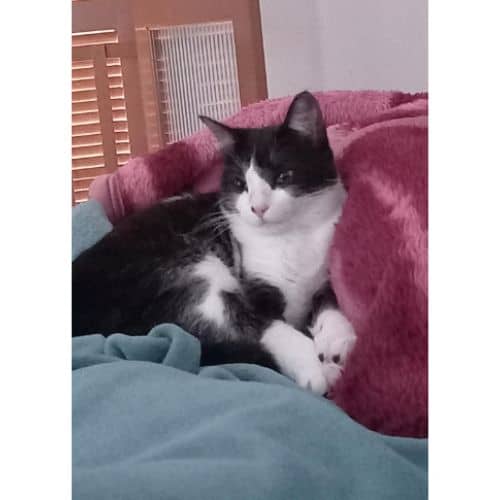
Cats frequently suffer from seizures because of a neurological disorder.
They are distinguished by rapid outbursts of muscular activity, which can cause the cat to tremble or even fall over.
The type and severity of your cat’s seizure will determine whether or not he or she experiences pain.
Some cats may have muscle spasms that are so mild that they won’t even be aware they’re experiencing a seizure at all.
While some cats may not be uncomfortable during a seizure, others may have mild to severe muscle spasms or convulsions.
However, in the vast majority of instances, the discomfort is, at most, modest, and it disappears as soon as the seizure is no longer occurring.
Types of Cat Seizures

People who aren’t familiar with seizures generally picture someone trembling all over, having foam coming out of their mouth, and losing consciousness.
Even though this happens frequently in cats, a variety of symptoms can accompany seizures, and not all of them are noticeable or dramatic.
Several different kinds of seizures can affect cats.
Focal Seizures
Focal seizures, also known as partial motor seizures, are cats’ most common type of seizure.
These seizures exclusively impact a specific region of the brain, with effects on the body that are highly regionalized.
The cat may appear dazed, but it will likely remain conscious throughout.
Although these seizures are typically harmless, owners of pets may ignore their telltale signs, which include subtle movements of the ears, mouth, and eyes.
Generalized Seizures

Seizures that affect the entire body, known as generalized or grand mal seizures, can cause tonic-clonic movements or convulsions and a loss of consciousness.
Because the condition typically affects a larger portion of the brain, it can manifest itself throughout the entire body.
Involuntary and frequently dramatic movements of the body’s muscles can be observed.
During a seizure, a cat’s usual body functions may temporarily cease, causing the cat to clamp its jaws, drool, urinate, or defecate.
Psychomotor Seizures or Complex Partial Seizures
These seizures induce odd behaviors, such as growling, violent gnawing at the tail or skin, loud vocalizations, or unpredictable running bursts.
These are very similar to and are frequently classified as a subtype of focal or partial motor seizures because they do not typically cause loss of consciousness.
The so-called “fly-biting” seizure is a popular form of psychomotor seizure.
During this seizure, a cat will suddenly start gnawing at the air with their mouth as though they are trying to capture flies.
Patterns can include the age at which seizures begin, the type, and how frequently they occur.
Finding out what kind of seizure pattern a cat has can assist in making a diagnosis and choosing appropriate therapies.
Potential Causes Of Seizures In Cats
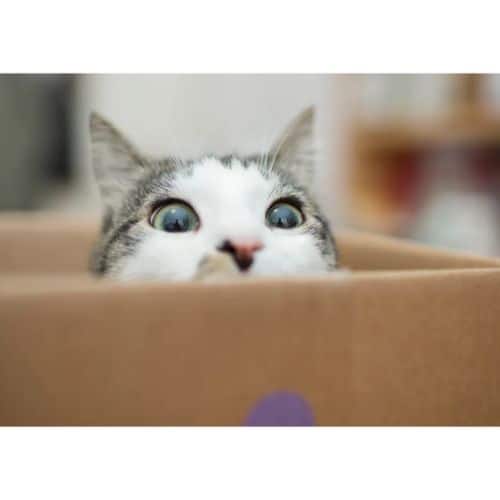
Let’s take a closer look at these potential causes of feline seizures.
Toxins
Antifreeze (ethylene glycol), rodenticide (rat poison, especially neurotoxic varieties), and pharmaceutical overdoses (antihistamines, some behavior-modification drugs) are all possible triggers of seizures in felines.
Since permethrin poisoning can cause significant muscle twitching, it is frequently misinterpreted as a seizure.
This poisoning is most commonly brought on by improper administration of flea and tick preventatives, specifically by administering a dose that is excessively high or giving a cat flea or tick treatment intended for dogs.
Although permethrins are not harmful to dogs when used at safe concentrations, even trace amounts can be fatal to cats.
Muscle relaxants and sedatives work better than anti-convulsants for cats with this poisoning.
Hypoglycemia

Kittens with intestinal parasites, poor nutrition, inadequate caloric intake, or a weak body are more likely to suffer from hypoglycemia.
Overdosing on insulin therapy causes hypoglycemia in cats of any age.
If your cat has recently been diagnosed with diabetes mellitus, discuss low blood sugar and insulin therapy with your veterinarian.
Excessive Noises and Flashing Lights
Cats are prone to convulsions when exposed to loud noises or bright lights. It is unclear why exposure to loud noises or bright lights may trigger these seizures.
Epilepsy and Metabolic Disorders

Epilepsy or a metabolic disorder like liver, renal, or thyroid disease might trigger a seizure cluster.
Epilepsy is commonly diagnosed in cats between the ages of 1 and 3, although recurrent seizures due to underlying disorders are more common in cats older than six.
In cats, epilepsy usually results from a combination of environmental factors and a faulty gene.
Idiopathic epilepsy is the category of seizure disorder where no identifiable trigger exists. This is extremely rare in felines.
Heat
An overheated brain or a high fever (caused by an infection, some types of malignancy, or an immune-mediated disease) can also trigger seizure-like behavior.
Neurological Disorder
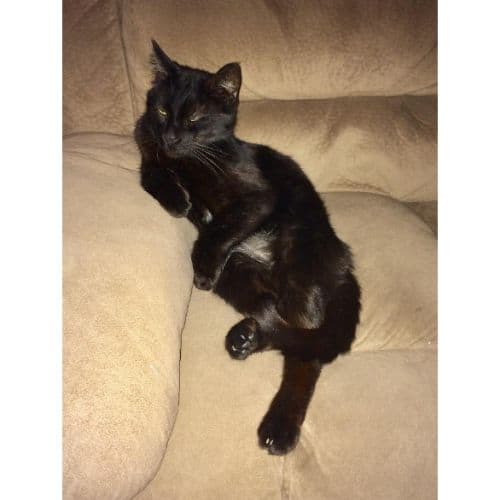
Cat seizures frequently result from intracranial (disease within or around the brain) conditions.
Infections including Cryptococcus, Toxoplasma, feline infectious peritonitis, and immune-mediated causes can all induce inflammation of the brain’s covering (meningitis or encephalitis), triggering seizures.
Stroke or Other Vascular Problems
Although less prevalent in cats than dogs, vascular complications like strokes are still possible.
Medical diseases like hyperthyroidism, cardiovascular illness, diabetes, and kidney failure are common sources.
Hypertension is a secondary impact of these disorders that might contribute to vascular complications.
Brain Tumor

Cats over the age of 10 often experience seizures because of brain tumors.
Most brain tumors are slow-growing benign growths originating in the brain’s lining. Surgery is frequently a simple way to remove them.
Growing tumors can cause inflammation and seizures by squeezing nearby brain tissue.
Diagnosis for Cat Seizures
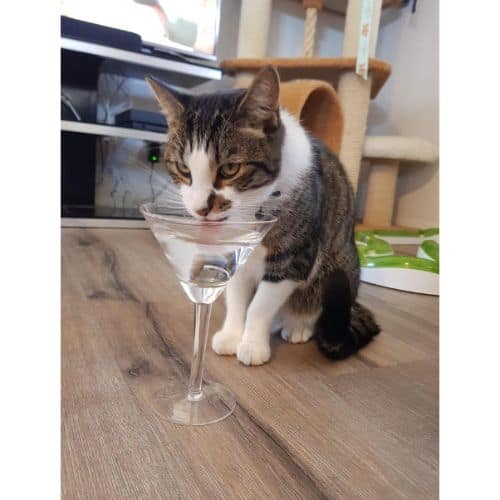
Your veterinarian will examine your pet and run diagnostic lab work at an animal hospital.
This can help your vet rule out several potential causes of seizures, including liver, kidney, or blood sugar problems.
If your cat has severe or frequent seizures and these tests are negative, you may want to take him in for additional testing to determine the cause.
Typically, these examinations are carried out at a veterinary referral center, and they may consist of:
- Removal of cerebrospinal fluid for testing
- CT Scan
- MRI
To help with the diagnosis, cat owners should look into whether or not their feline friend was exposed to any poisons.
Always let your vet know if your cat has had any recent changes in behavior or health that would explain the seizure.
How Fatal are Cat Seizures?

It is important to note that seizures alone do not pose a significant threat of death for cats.
A seizure might cause vomiting, convulsions, or drooling by itself.
But you may rest assured that a seizure won’t be fatal for your cat if you rule out significant medical conditions like a brain tumor or head trauma.
That’s why it’s crucial to figure out what’s causing your cat’s convulsions in the first place; seizures are dangerous, but the underlying cause could be fatal.
When to Euthanize a Cat with Seizures
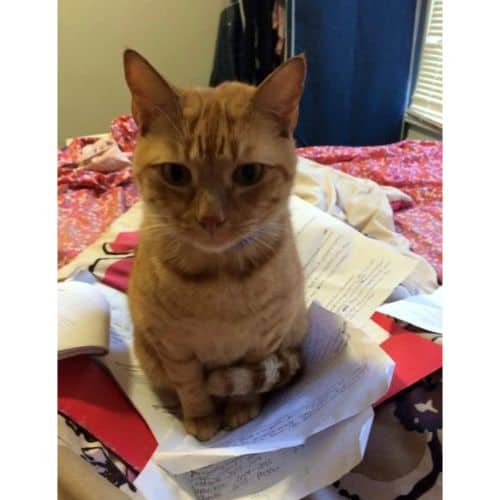
Medication is often effective in controlling seizures, although this depends on the underlying reason.
Treating the underlying cause of seizures can sometimes halt the seizures.
Therefore, euthanasia is not always required until the cat’s quality of life is seriously impaired.
When medications stop working, or a cat’s seizures become unmanageable, euthanasia is the kindest option for everyone involved.
Both cats and their owners can suffer significantly from epileptic seizures, and euthanasia may be the most humane option if the seizures are becoming more common or severe.
There are a lot of variables that will need to be considered.
Some signs that you and your veterinarian should talk more seriously about putting your cat to sleep are as follows:
- The seizures, or their after-effects, severely impair your cat’s quality of life by preventing them from acting normally.
- The veterinarian has confirmed that your cat has a fatal disease that produces uncontrollable seizures for which there is no therapy.
- The severity or frequency of seizures is increasing despite using all currently available therapies.
Options for Cat Euthanasia

The decision to euthanize a cat is difficult for many owners to make when their pet is in the latter stages of a terminal disease or injury.
Bear in mind at all times that euthanasia is not a kind of punishment but rather a way to put an end to your cat’s misery and ensure that he or she passes away in peace.
Among the many options for euthanasia for cats are:
Euthanasia at Home
Some animal hospitals provide euthanasia services at home, with a vet visiting the cat’s location to put an end to its suffering.
Both the cat and the owner may find this method more relaxing and convenient.
Euthanasia in a Veterinary Hospital

You can find euthanasia options at most animal hospitals.
Before giving the cat a deadly injection, veterinarians often give it a sedative to put it at ease. In most cases, the cat’s death is quick and painless.
Euthanasia in Shelter
A shelter may choose to euthanize a cat if it determines it is unsuitable for rehoming due to medical or behavioral reasons.
Most shelters only resort to this when they have tried everything else and failed.
Group Euthanasia

It is possible to euthanize numerous cats at once.
This procedure is frequently carried out in animal shelters and veterinary clinics when numerous cats suffer from the same illness or condition.
Procedure for Cat Euthanasia
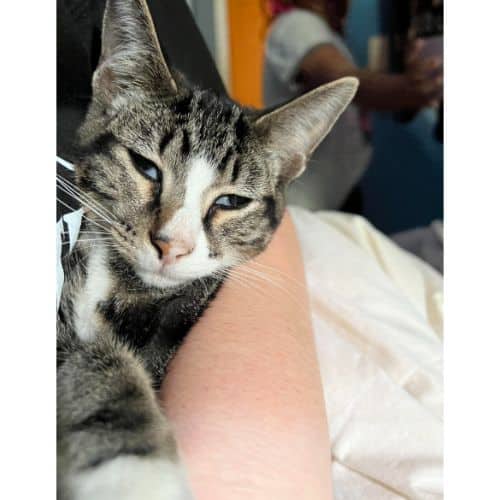
Here are the measures taken during a typical cat euthanasia procedure:
1. Vet Consultation
First, you should talk to your vet about your decision to put your cat to sleep.
They will examine your cat and advise you as to whether or not euthanasia is the best option.
2. Consent
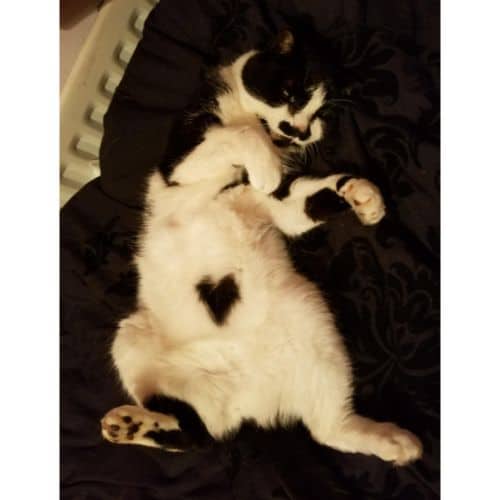
You will need to sign a consent form after you have chosen to put your cat to sleep.
Your signature on this form will officially confirm that you approve of euthanasia.
3. Sedation
Your cat will be sedated before the euthanasia operation begins to ensure its comfort. It may be administered orally or intravenously.
4. Administration Of Euthanasia Drug
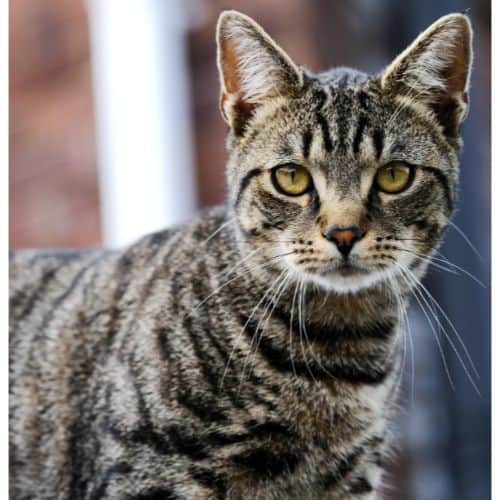
The euthanasia pill is often a combination of sedatives and heart-stopping medicine.
It is injected into the cat’s vein, typically in the leg. Your cat will become unconscious rapidly as a result of this drug.
5. Confirmation
After administering the euthanasia drug, your vet will examine your cat to ensure it has passed away.
They might look for a pulse or other indications of life, but in most situations, it will be evident that your cat has passed away calmly.
6. Follow-up

You can choose whether to have your kitty cremated or buried at home. Your vet can advise you on the best course of action for your family after surgery.
Frequently Asked Questions
How many seizures is too many for a cat?
If seizures occur regularly more than once every six weeks, you need to seek treatment for your cat.
Can seizures in cats cause death?
Some seizures can cause cats to die. But most of them will not.
How painful are seizures for cats?
These are not painful for cats. They can, however, be traumatic.
When to Euthanize a Cat with Seizures?

Ultimately, whether you decide to euthanize your cat or not is a decision that only you can make.
However, if your cat seems to be in great distress or pain from recurring seizures, it may be time to think about a humane solution like euthanasia.
If you find this guide, “When to Euthanize a Cat with Seizures,” informative and helpful, you can check out these other cat-related articles from our team:
You can learn more about this topic by watching “100 FACTS About CATS That May SURPRISE You 🐱🐾” down below:




